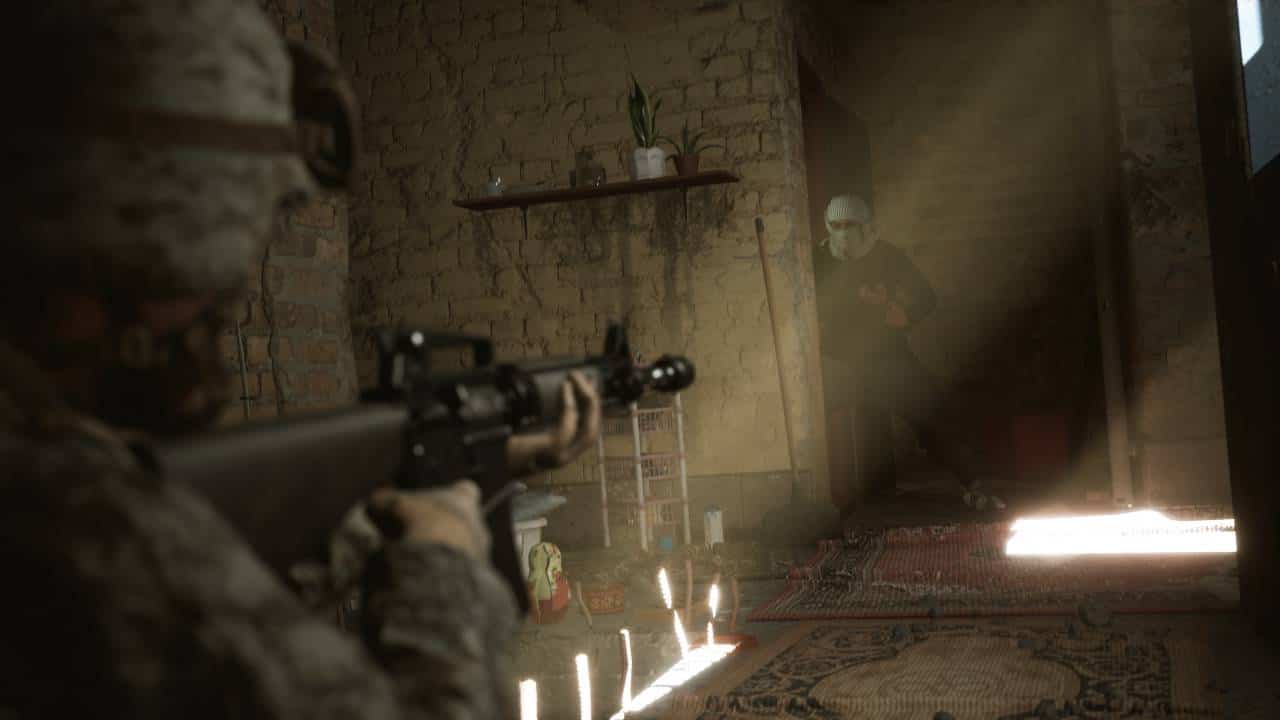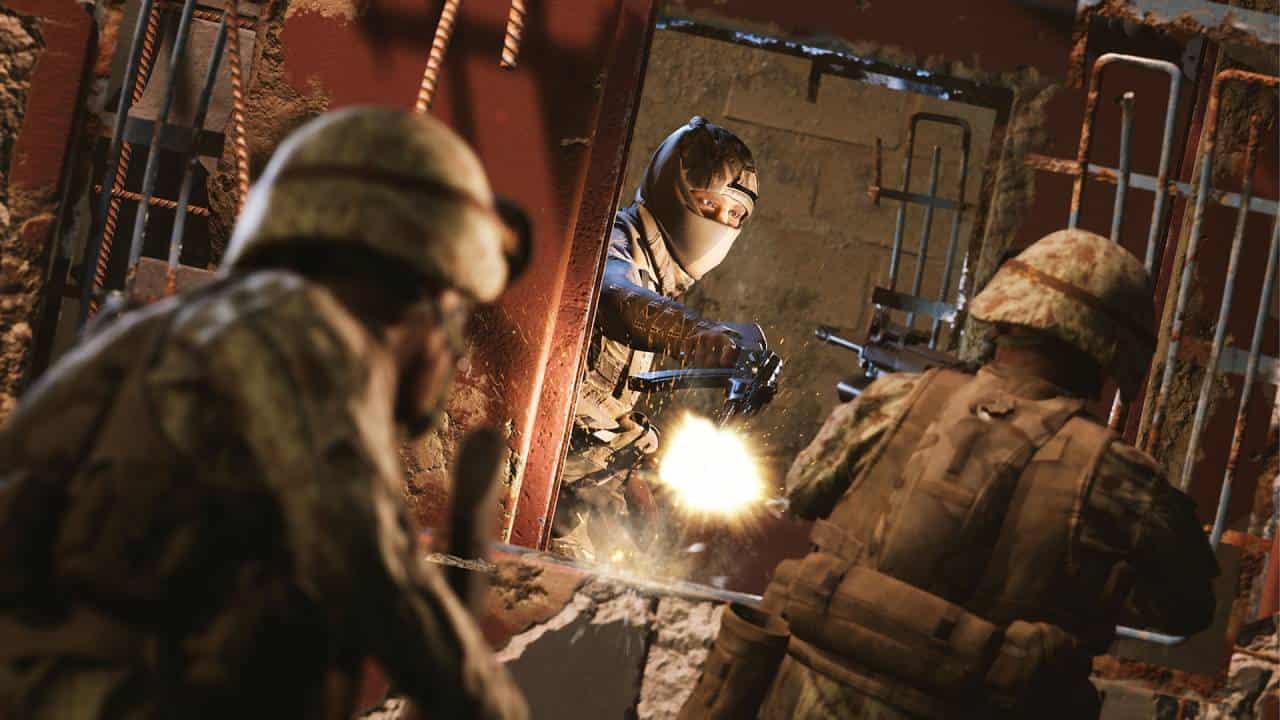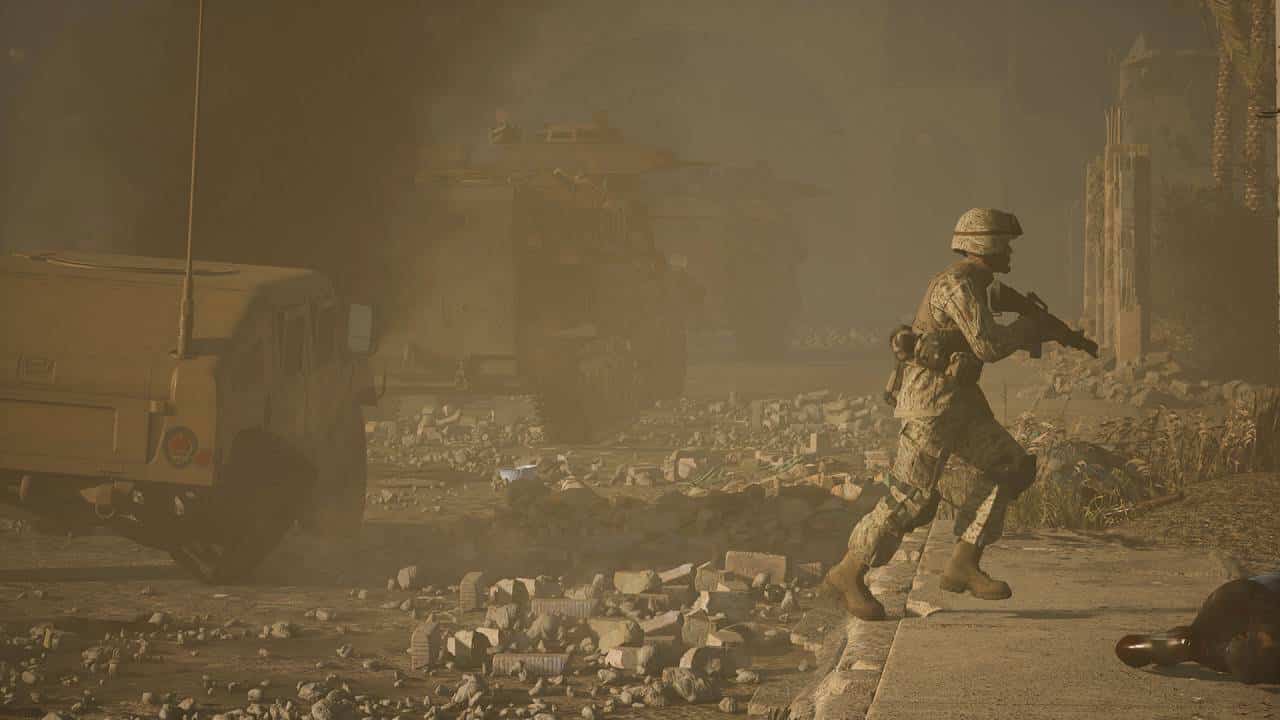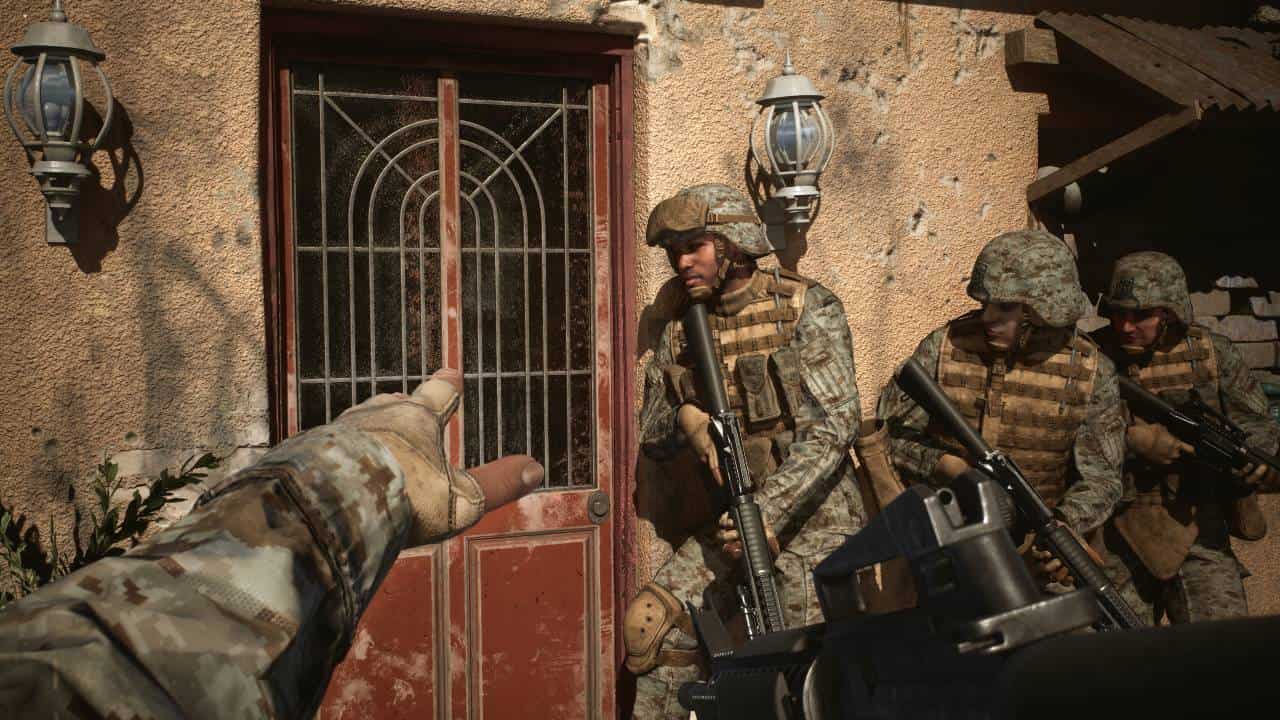Video Gamer is reader-supported. When you buy through links on our site, we may earn an affiliate commission. Prices subject to change. Learn more
This article is part of a promotional campaign for Six Days in Fallujah.
In a world where video games often make the player a near-invincible super-soldier, and where actions and decisions have little consequence, Six Days in Fallujah strives to do the opposite.
Based on the events in Iraq during 2004, developers HighWire Games have ‘thrown away’ conventions and mechanics that typically pander to the player. Your actions in Six Days have real, grave consequences for you and your team, and your ability to make split-second decisions in a hostile environment will be put to the ultimate test.
CLICK HERE TO PLAY EARLY ACCESS
A large part of delivering this experience comes down to the graphics and AI engines, which blend cutting-edge technology with a number of custom-built in-house solutions designed to challenge even the most accomplished strategists. One such technique is Procedural Architecture that aims to reflect the unpredictably and intense psychological challenge facing soldiers in conflict.

“We have very heavily modified the Unreal Engine. But that was the easy part. The hard part is that Procedural Architecture requires us to throw away all the conventional ways of building art, missions, audio, and AI because all the conventional ways of doing this assume the environment always stays static,” explains Peter Tamte, CEO of HighWire Games.
“For example, in conventional level design, the designer places doors, walls, windows, staircases, roads, trees, and everything else exactly where they want them. Then they place each AI exactly where they want them inside this static environment. Then they script the behaviours for each of these AI that determines how each one will react under predetermined circumstances.”
With Procedural Architecture, nothing is scripted. The designer doesn’t control where any door, wall, or window will be. This is generated differently by the simulation each time the game is played. So, this also means the designer can’t place individual enemy AI in specific parts of the map, since the map doesn’t exist until the game is played.

To tackle this, HighWire Games had to rethink how AI works in video games – and developed a system called ‘Block-scale AI’.“Rather than placing individual AI in the game world, and then setting a limited number of scripted behaviours that will play-out once players step on a trigger, we instead programmed a wide range of behaviours into each AI,” said Tamte.
“We then gave them the intelligence to know which behaviour to play depending on factors such as threats, for example the location of cover. This way, any of these AI enemies can be dropped into a map anywhere, and have the ability to navigate anywhere, leverage the environment to their advantage, and make intelligent offensive and defensive decisions while they stalk, flank, hit-and-run, and ambush you.”
Another huge aspect in attempting to capture the challenge facing soldiers in battle is lighting – which is typically one of the largest computational obstacles developers need to overcome. This becomes even more challenging when dealing with procedurally generated worlds, as lighting in many games not using this technology is typically baked’ on to a pre-built environment. This led HighWire Games to create a system they call Global Dynamic Lighting.

“The only way to make environments and characters look photo-realistic is by calculating how light bounces around the environment, changing not just the darkness of each pixel in both the environment and the characters, but also the subtle colour differences of each pixel,” explains Tamte.
“Until now, the principal way to make games look beautiful has been by pre-calculating all this lighting. Lighting is “baked” into the environment and then special reflection maps are created to help characters look like they belong in this environment. Of course, all these methods assume the environment stays static all the time. Otherwise, there’s no way to pre-calculate all the lighting. This is impossible for environments that are generated procedurally.
“Global Dynamic Lighting allows us to render environments at a high quality, as well as giving us a dynamic system to make combat more realistic. For example, interior rooms look very dark from the outside until you get very close. Then your eyes adapt, and you can see inside better. But getting close to windows is dangerous – especially if it’s dark inside. It’s one of many tactical decisions you will need to make.”

The custom lighting system also allowed HighWire to change the direction and height of the sun, adding more variety to the simulation. Early morning creates long shadows, which can be used by players and enemy AI to remain concealed, while noon can be blindingly bright. Rooms that face east in the morning might be brightened by the sun, but are very dark in the evening, while weather also plays a big factor in visibility.
“True realism comes from much deeper ways of stimulating the feelings of combat,” adds Tamte. “Procedural architecture helps reflect the uncertainty soldiers face every time they step out on the battlefield. This psychological challenge has been at the heart of Six Days since we started the project, and we’re looking forward to hearing feedback from players throughout the early access period.
Six Days in Fallujah is out now via early access on Steam.

